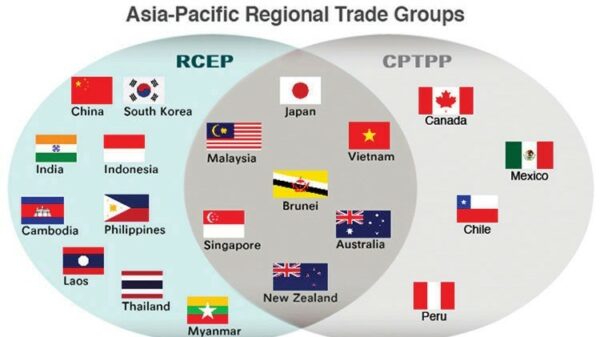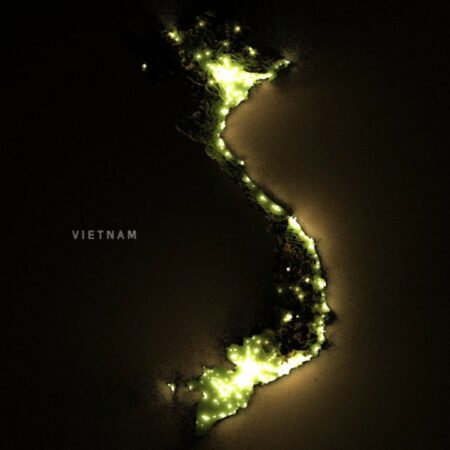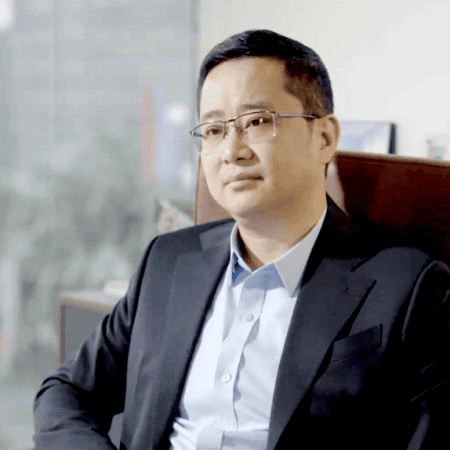
While the World’s attention is on the chaos of United States, Vietnam continues its Regional Integration with East Asia

Recently there has been much concern on the status of the trade relationship between Vietnam and United States. When the Trump Tariffs were first announced on the 2nd of April 2025 and a 46% rate was imposed on Vietnam, the impact seemed disastrous. It would have resulted in 1-2 million job losses in Vietnam. But within the following 8 days, the United States’ “reciprocal” tariffs on most countries, including Vietnam, were reduced to 10%, while those on China were increased to 145%. If this sticks, it would be a big win for Vietnam. But if there’s one thing clear from this volatility, it’s this: U.S. trade policies will keep changing at a fast pace – Vietnam can no longer rely on the U.S. as a stable trade partner. Instead, the real story is Vietnam’s deeper, longer-term integration with East Asia.
There is an ongoing pattern of Vietnam integrating economically with East Asia: Japan, South Korea, Taiwan, Singapore and China. This trend has been emerging since I moved to Vietnam in 1994 (shortly after the U.S. led trade embargo on Vietnam was lifted). The trend has accelerated in the last 10 years, in part due to greater economic activity between China and Vietnam, as well as a massive amount of Korean investment in Vietnam.
Sources of Foreign Investment in Vietnam
Even back in the 1990s, Japan, Taiwan, South Korea and Singapore were consistently the four largest investors in Vietnam. Gradually China increased its role as an investor in Vietnam and became the second largest after Singapore.
Here’s Vietnam’s foreign investment data for 2024:
China and Vietnam’s Supply Chain Integration
China’s Belt and Road Initiative (BRI), launched in 2013, has become one of the most ambitious infrastructure and investment programs globally, seeking to link China to global supply chains, including Vietnam. China’s total investments under the BRI have likely surpassed $1.2 trillion, encompassing over 3,000 projects across various continents. In Vietnam, this includes:
- The Cat Linh–Ha Dong Metro Line in Hanoi, an investment of around $868 million.
- In February 2025, Vietnam approved an $8 billion project to upgrade the Lào Cai–Hanoi–Haiphong Railway, enhancing connectivity between the Chinese border and key Vietnamese ports.
- Discussions are underway to potentially link Vietnam’s upcoming $70 billion North–South Express Railwaywith direct links to China’s rail network.
Meanwhile much investment is happening on the Vietnamese side to enhance supply chain integration with China, for example:
- The Vietnam SuperPort in Vinh Phuc, an 83-hectare multi-modal logistics center, is a $166 million JV between Singapore’s YCH Group and Vietnam’s T&T Group. This is situated north of Hanoi on the Lao Cai–Hanoi–Hai Phong railway corridor.
- The Lao Cai Border Gate Economic Zone is being developed into a modern logistics and transshipment center, serving as a major hub on the Kunming (China) – Lao Cai – Hanoi – Hai Phong – Quang Ninh economic corridor. It has attracted $1.5 billion across 240 projects.
- The VietTel Logistics Park in Lang Son, with an investment of $130 million, was recently inaugurated. It is situated at the Huu Nghi-Lang Son border gate, the largest road crossing between Vietnam and China, approximately 1,300 containers pass through daily.
Vietnam’s Trading Partners
This is no doubt a complex picture, but all of Vietnam’s largest trading partners are in Asia with the exception of the United States.
Vietnam is a member in the Regional Comprehensive Economic Partnership (RCEP), which includes China, Japan, South Korea, and ASEAN, giving it tariff-free access to over 2.2 billion consumers.
China is already the second largest export market for Vietnam, with $73 billion in exports to China in 2024.

Samsung is the single largest foreign investor in Vietnam, having invested a cumulative $23 billion in Vietnam. Samsung employs over 100,000 workers in Vietnam, mainly in Bắc Ninh and Thái Nguyên in the North, making it Vietnam’s single largest employer among foreign firms. Samsung manufactures approximately 60% of its smartphones in Vietnam and has reduced its dependence on China for smartphones production to 25%. In 2024, Samsung Vietnam’s exports totaled approximately $54.4 billion, accounting for about 13.4% of Vietnam’s total exports of $405.5 billion.
Apple’s suppliers such as Foxconn (Taiwan), Luxshare (China), GoerTek (China), and Compal (Taiwan) have also invested around $5.5 billion in Vietnam but are not as well-established as Samsung. As of early 2025, approximately 80% to 90% of Apple’s iPhones are assembled in China, a very precarious situation for Apple in 2025. Vietnam contributes to Apple’s supply chain by producing around 20% of iPads and 90% of AirPods.
Foreigners working in Vietnam
Foreigners working in Vietnam will obviously correlate to countries from which foreign investment in Vietnam originates. The four biggest sources of foreigners working in Vietnam are all from East Asia: Korea, China, Taiwan and Japan. Native English-speaking countries such as U.S., U.K. and Australia are a surprising small source of foreigners at less than 10% of the total, and it’s estimated that around 25% of those are teaching at English centers or K-12 schools.

Visitor arrivals to Vietnam
Foreign visitors to Vietnam were up 26% in 1Q25, a new all time high! Where are these visitors coming from?

The big two sources of foreign visitors to Vietnam are South Korea and China. China is currently the fastest growing category and will certainly emerge as the #1 source of foreign visitors to Vietnam within the next few years. One of those Chinese visitors is Xi Jinping, who will be in Hanoi on 14-15 April 2025 on his 4th official visit to Vietnam since 2015 as China’s top leader. To be fair, U.S. presidents have also visited Vietnam four times over the same period, but I believe the pinnacle of bilateral relations between U.S. and Vietnam was this moment in Hanoi in May 2016. But I digress.

Vietnam Airlines operates a total of six routes between Vietnam and China with a frequency of 40 flights per week, connecting major cities of the two countries such as Hanoi and HCMC with Beijing, Shanghai, and Guangzhou. By contrast, Vietnam Airlines has one direct route to the U.S., HCMC to San Francisco, which operates 4 flights per week. Is it becoming clear yet?
Vietnamese students abroad
Back in 2015, Australia and the United States were in the top 3, just after Japan. Within 9 years that completely changed – the top 4 countries of destination for Vietnamese students to study overseas are now: South Korea, Taiwan, China and Japan. Its also interesting to note that among Western countries, there was a big shift away from the U.S. and U.K. and towards Canada, which makes sense given Canada’s open and welcoming approach to foreigners.

Popular Culture
Here are the top 10 most popular foreign TV series in Vietnam in the last 10 years. This underscores the strong cultural influence of East Asia in Vietnam.
- Squid Game (South Korea)
- Descendants of the Sun (South Korea)
- Crash Landing on You (South Korea)
- The Glory (South Korea)
- Money Heist (Spain)
- Extraordinary Attorney Woo (South Korea)
- All of Us Are Dead (South Korea)
- The Untamed (China)
- Attack on Titan (Japan)
- Goblin (South Korea)
Bringing it all together
- The countries with the largest foreign investment in Vietnam are from East Asia.
- China and Vietnam are both investing in the infrastructure for efficient supply chain integration.
- Vietnam’s largest trading partners are mainly in East Asia.
- The vast majority of foreigners working in Vietnam are from East Asia.
- The vast majority of foreign visitors that come to Vietnam are from East Asia.
- More than half of Vietnamese students abroad are studying in East Asia, the biggest growth being in Korea, Taiwan, China (and Canada).
- Vietnamese popular culture is most influenced by East Asian pop culture.
Vietnam is already tightly integrated with East Asia, and this trend will only continue in the coming years.
—
About the author: Chris Freund is the founder and Managing Partner of Mekong Capital, Vietnam’s first Private Equity firm, which was established in 2001 and had made more than 45 private equity investments in Vietnamese companies. Vietnam is home to Chris, where he has lived for more than 27 years, starting in 1994.
Tags: Vietnam







Leave a Reply